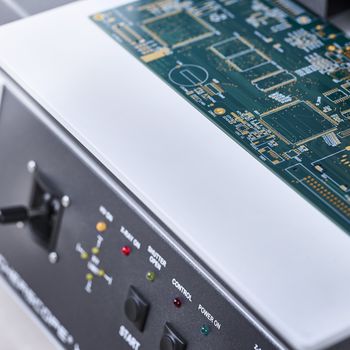
As the electronics industry makes use of ever thinner coatings, manufacturers increase their demands on measuring technologies to provide reliable parameters for product monitoring. One example is the Au/Pd/Ni/Cu/printed circuit board system with coating thicknesses for Au and Pd of just a few nm. For monitoring the quality of these coating systems, X-ray fluorescence instruments have established themselves as the measurement method of choice.
| | 50 nm Au | 24 nm Pd | ||
|---|---|---|---|---|
| Detektor type | Standard deviation | Coefficient of variation | Standard deviation | Coefficient of variation |
| Proportional counter tube (0,2 mm Aperture) | 2,2 nm | 4,3 % | 3 nm | 13 % |
| PIN detector (1 mm Aperture) | 0,9 nm | 1,8 % | 1,2 nm | 4,8 % |
| SDD detector (1 mm Aperture) | 0,2 nm | 0,4 % | 0,5 nm | 2,1 % |
Proper handling of the fluorescence signal generated by the substrate material is also more important with thinner coatings. While a general subtraction of the background signal does improve the repeatability precision, it can also introduce errors into the results. The evaluation software WinFTM® therefore explicitly allows the composition of the substrate material to be taken into account with every measurement.
Your local contact person for FISCHER products will be happy to assist you in selecting a suitable X-ray fluorescence instrument for measuring Au/Pd coatings on printed circuit boards – FISCHERSCOPE® X-RAY XDL® with proportional counter tube, XDAL® with PIN detector, or XDV®- SDD with SDD detector.